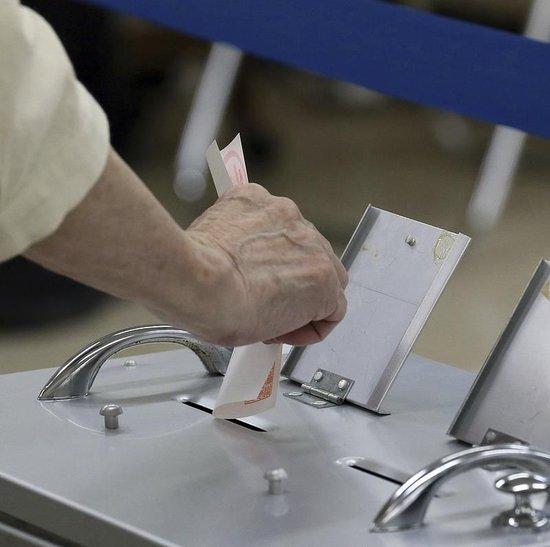


On July 20th, local time, Japan held its parliamentary election in the Senate. Currently, the ruling party’s measures to address rising prices have sparked strong public dissatisfaction; the “tariff stick” from the United States continues to bring economic and diplomatic pressure.
Analysts generally believe that the ruling coalition formed by the Liberal Democratic Party and the Constitutional Democrats is likely to struggle to retain the majority in the Senate. Meanwhile, the populist conservative parties in Japan are on the rise, potentially becoming a “decisive minority.”
The ruling coalition faces “extremely difficult” circumstances in the Senate elections. On July 20th, local time, Japan held its parliamentary election in the Senate. Apart from some areas, voting hours were from 7 am to 20 pm (Beijing time 6 am to 19 pm). According to a message previously released by the Ministry of Internal Affairs and Communications, vote counting is expected to be completed before 7 am local time on July 21st (Beijing time 6 am on July 21st).
As of July 18th, the Ministry of Internal Affairs and Communications stated that more than 21.45 million people had already cast their early votes in the Senate election, setting a new historical record.
The total number of seats in the Japanese Senate is 248. Senators serve for six years and are re-elected every three years, half of them. This time, the Senate election will focus on the 124 seats up for re-election and one additional seat in the Tokyo district, totaling 125 seats. The non-re-elected senators from the ruling Liberal Democratic Party and the Public Ministries Party amount to 75. If the ruling party wants to secure at least 50 seats in the Senate, it must win at least 50 seats in this election.
The ruling coalition may find it challenging to achieve its election goals. However, according to Japan’s media, the ruling coalition might struggle to meet its election objectives. The Yomiuri Shimbun predicted that the Liberal Democratic Party could end up with only about 30 seats, making it difficult even with the seats from the Public Ministries Party. The Asahi Shimbun and Nikkei Shimbun believe that winning 50 seats is “extremely difficult” for the ruling coalition.
Several Japanese media have conducted the latest surveys, revealing that compared to the early stages of the election campaign, the governing coalition’s momentum is continuously weakening, with nationwide approval ratings continuing to decline.
The cabinet support rate is nearing “the danger zone”
In Japan’s political arena, a cabinet support rate below 30% is considered entering “dangerous waters”; if it falls below 20%, it is deemed falling into “dangerous waters.”
A recent public opinion poll shows that the cabinet led by the current Prime Minister, Yoshihide Suga, has dropped to 20.8%, down 6.2 percentage points from last month, marking its lowest value since his administration began; meanwhile, the opposition rate has risen to 55%, an increase of 6.6 percentage points from last month, reaching its highest value since his tenure.
Multiple polls indicate that the governing coalition, composed of the Liberal Democratic Party and the Komeito Party, faces severe challenges in the election, potentially failing to achieve the goal of maintaining more than half of the seats.
After Yoshihide Suga became Prime Minister, the Liberal Democratic Party performed poorly in two major elections. In the House of Representatives elections held in October last year, the coalition’s seats did not exceed half, becoming a minority government. In the Tokyo Diet Election, which was seen as a “prelude” to the Senate election this June, the Liberal Democratic Party suffered a crushing defeat, achieving its lowest number of seats in history. According to Japanese media, the results of this Senate election will determine the fate of the Suga cabinet.
Populist conservative parties are gaining momentum
This election campaign has attracted attention to the strong participation of populist conservative parties. The party secured one seat in the 2022 Senate elections, making its first entry into the parliament, and gained three seats in the House of Representatives elections last year. Recent polls show that this party has strong competitiveness in key districts such as Tokyo and Saitama.
As per Asahi Shimbun predictions, the populist conservative party is expected to secure about 7 seats in districts and approximately 8 proportional representation seats (i.e., seats allocated based on vote share among different parties), bringing its total seats to around 15.
Another media outlet has pointed out that the party might leapfrog into becoming a significant opposition force, following the largest opposition party, the Liberal Democratic Party, and become a “decisive minority” in the future.
Price increases and tariff pressures have led to public dissatisfaction with the ruling party’s response measures.
Data released by Japan’s Ministry of Health, Labour and Welfare on July 7th showed that Japan’s real wages decreased for the fifth consecutive month in May, with the decline being the largest in nearly two years. Although Japan’s nominal wages increased by 1.0%, high prices led to a decrease in real wages. Due to soaring food prices, such as rice, Japan’s Consumer Price Index rose by 4.0% in May, reaching or surpassing 4% for the sixth consecutive month. Additionally, the impact of the US “tariff hammer” has brought economic and diplomatic pressures.
In July 2025, the Trump administration announced a 25% tariff increase on Japanese goods exported to the United States (previously at 24%), threatening that if Japan retaliated, the tariff rate could be doubled to 50%. The automotive industry was hit hardest, with Japan’s annual automobile exports to the US amounting to 20 trillion yen (accounting for 20% of total exports), involving 5.5 million jobs. Shares of Toyota and Honda fell by more than 4%, potentially causing a 0.8% drop in Japan’s GDP.
Yoshihiro Suzuki, a distinguished professor at Hokkaido University, believes that since Shinzo Abe took office, his policy of improving people’s livelihoods has been a flagship policy, but it has had little effect on the issue of price inflation, which is the most important reason for the low popularity of the ruling coalition.
The election may affect the direction of Japanese politics.
Suzuki stated that this election might become a critical point in determining the future direction of Japanese politics.
Yoshihiro Suzuki, Distinguished Professor at Hokkaido University: Currently, including the media, there is a very high expectation for this Senate election, and the turnout rate is undoubtedly higher than before or last time.
Voters who have previously avoided the polling stations, known as the “floating layer,” if they cast their ballot this time, are mostly negative or even critical towards the ruling Liberal Democratic Party (LDP) and the Democratic Progressive Party (DPP), which is the LDP’s party. Consequently, some reformist parties, including the DPP, that oppose the LDP, are expected to see a significant increase in their vote count.
A defeat in this election could further complicate the situation for the ruling coalition.
Analysts point out that if the ruling coalition fails to win this election, it will face even greater challenges than last year when it became a minority in the House of Representatives and lost its majority in the Senate. The government led by Prime Minister Taro Kono will find it even more difficult to govern. Additionally, the populist conservative parties that advocate exclusionist policies are strong contenders in the elections, potentially leading to further conservatism and right-wing tendencies in Japanese politics. Furthermore, with the deadline for the US to impose tariffs on Japan approaching, this election could also impact future trade negotiations between Japan and the United States.
From within the LDP, if Kono fails to achieve his announced election goals, he will face considerable pressure to step down.